22+ Sample Transport Service Proposals
-
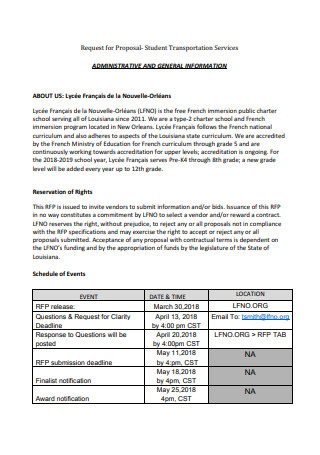
Student Transportation Service Proposal
download now -

Sample Transportation Service Proposal
download now -
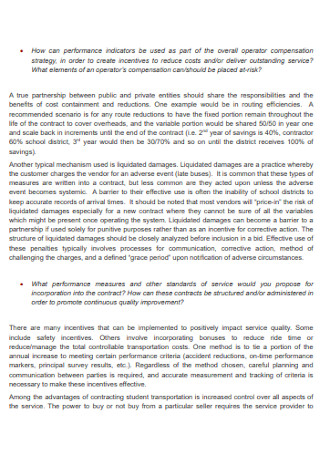
Proposal to Student Transportation Services
download now -

Airport Transportation Service Proposal
download now -

School Transportation Service Proposal
download now -
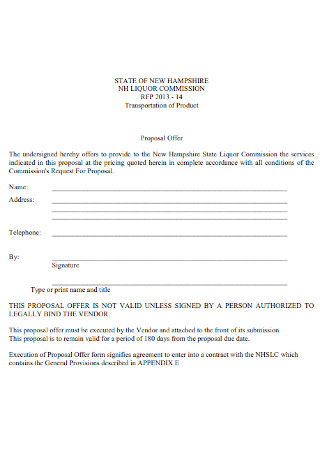
Transportation of Product Services Proposal
download now -
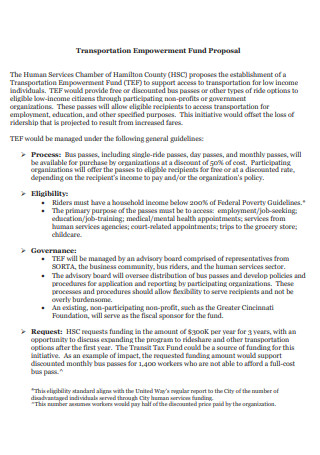
Transportation Empowerment Fund Services Proposal
download now -
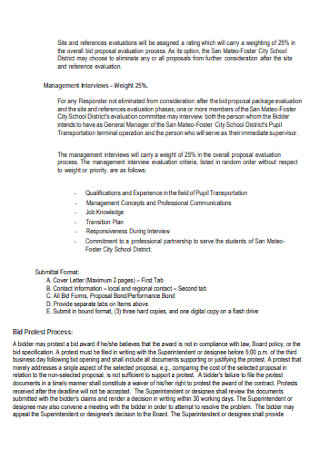
Transportation Services Request Proposal
download now -
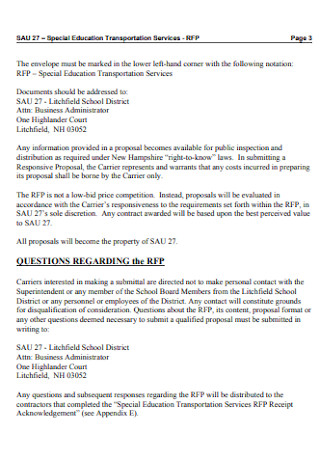
Proposal for Education Transportation Services
download now -
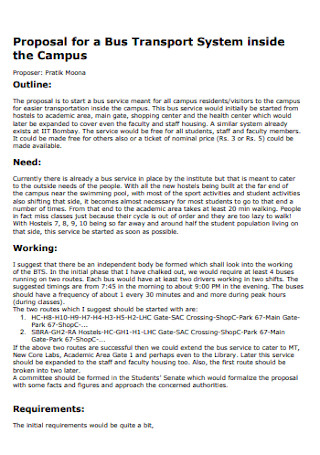
Proposal for Bus Transportation Services
download now -
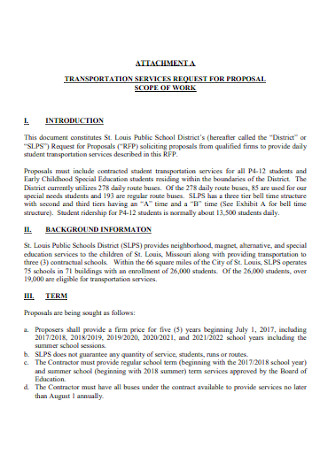
Transportation Services Request for Proposal
download now -
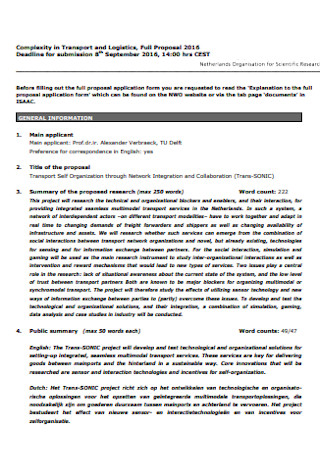
Logistic Transport Services Proposal
download now -
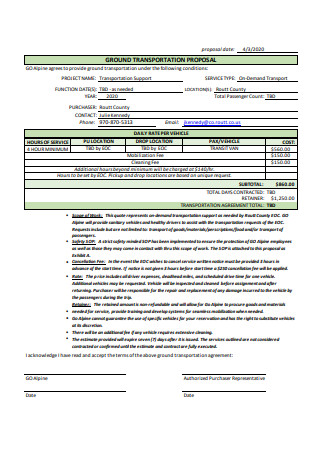
Ground Transportation Service Proposal
download now -
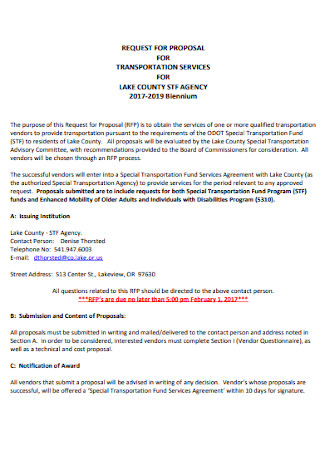
Agency Transportation Service Proposal
download now -
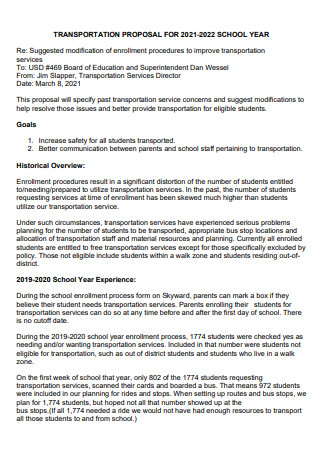
Transportation Proposal For School Year
download now -
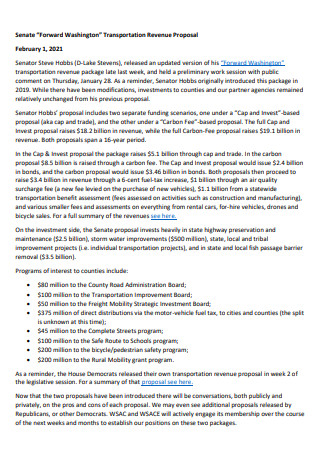
Transportation Revenue Service Proposal
download now -
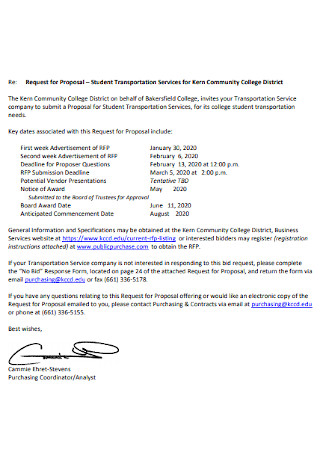
Transportation Services Proposal for College
download now -
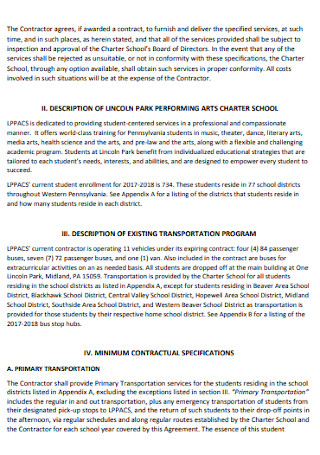
Transportation Services Proposal Example
download now -
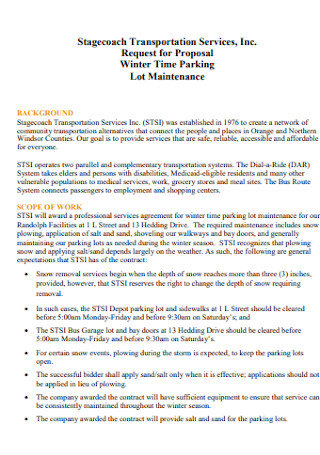
Stagecoach Transportation Services Proposal
download now -
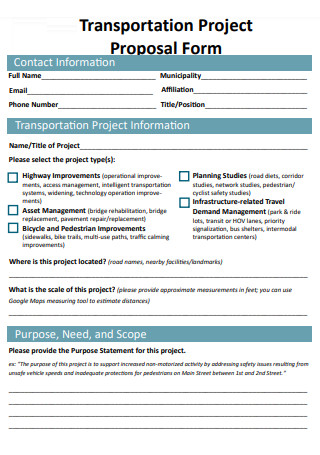
Transportation Project Proposal Form
download now -
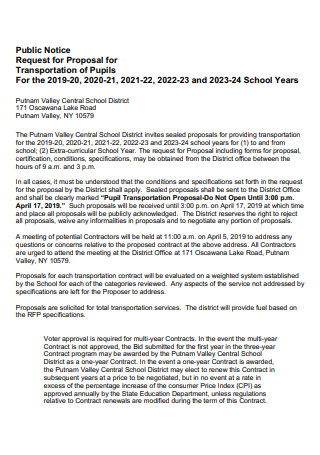
Transportation of Pupils Service Proposal
download now -
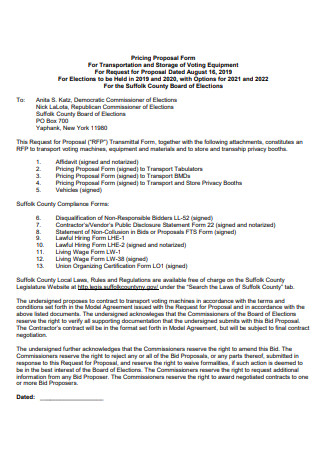
Transportation Pricing Service Proposal
download now -
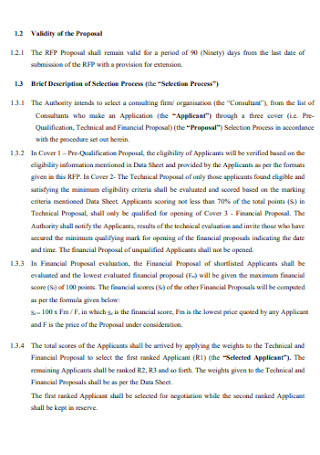
Corporation Transportation Service Proposal
download now
FREE Transport Service Proposal s to Download
22+ Sample Transport Service Proposals
What Is a Transport Service Proposal?
What’s Inside a Transport Service Proposal?
Steps in Creating a Transport Service Proposal
FAQs
What is an example of a type of transportation?
What is a transportation infrastructure?
Can transport be animal-powered?
What Is a Transport Service Proposal?
Before we get to know the main proposal document, what does transport mean? To put it simply, the movement of people, animals, and products from one area to another is referred to as transportation. It can include the usage of motorbikes, bicycles, buses, taxis, trucks, trains, ships, and airplanes. Proper infrastructure, such as bus terminals, airport terminals, truck hubs, roadways, airways, and waterways, is required for transport vehicles to go from one location to another without incident. Transport has always been an important aspect of a country’s economic growth since, as previously noted, one of the primary functions of transportation is the exchange of products between people. As the country’s economy develops, so does its civilization and its overall way of life.
One of the ways that a company can contribute to the economy using transportation is by specializing in transport services. To gather potential clients, a transportation service proposal needs to be in place, and it needs to be effective. It is a business document that highlights a company’s valuable transportation services and persuades potential clients to use such services. Potential clients can have a thorough grasp of the transport service company’s travel packages, shuttle services, and other transport business services through this form of service proposal. Essentially, this paper serves as a sales presentation, demonstrating that a firm understands the customer’s transportation service concerns and will propose to that potential client that the company has the required tools to address them.
What’s Inside a Transport Service Proposal?
For this document to be effective, a transport service proposal needs to have the following key components in place:
Steps in Creating a Transport Service Proposal
Here are the key steps that should be followed when creating a transport service proposal; Take note that some more steps may need to be present depending on a number of factors, such as the complexity of the deal, the type of company/client that is involved in the proposal, and so on.
1. Identifying the Main Parties
This is the first step that is to be followed when creating the proposal. In this step, the parties that are involved will need to be identified, along with their roles/responsibilities. In the case of the transport service proposal, the parties involved are the service provider (the transport service company) and the client, which can be another company, an organization, or a simple group. The responsibilities of the service provider include providing the right type of transport service that is requested by the client in a professional manner, making sure that the transport vehicles being provided are in good operating order and are properly maintained, and so on. On the client’s end, their responsibilities include fulfilling the terms of payment including how much and when it has to be paid, honoring any confidentiality present, and taking care of the transport vehicles provided to them by the company.
2. Writing the Primary Clauses
Once the main parties of the proposal have been identified, it’s time to proceed to this step, in which the primary parts of the proposal have to be written down. Some of the primary parts of the proposal include the purpose of the document, the scope of work section, and the rationale section. The purpose section of the document, well, as its name states, should explain the company’s concrete grasp of the challenges that the potential customer is currently experiencing and should solely describe the potential client’s concerns. In creating the scope of work section of the document, keep in mind that it should focus on the precise things that the company will accomplish for the client and why they’re doing it. The rationale section, meanwhile, will act as an argument in support of the organization undertaking the planned project or delivering the suggested service.
3. Creating the Secondary Parts
Once the main clauses of the transport service proposal have been completed, it’s time to proceed to this step, in which the secondary parts of the document have to be written down. These are also known as the boilerplate clauses. Some of these include the terms and conditions section, the severability clause, and the governing law section. The terms and conditions section should simply outline the regulations that all parties involved must follow if the client accepts the proposal. The severability clause of the document essentially states that if any part of this document is deemed to be unenforceable, that offending provision will be removed and will be replaced with a similar (but non-offending) provision, while the governing law section simply dictates the governing laws and the place that the proposal will adhere to.
4. Finalization
Once all the parts of the proposal have been created, it’s time to finalize the entire document. In this step, check for any errors that may have been skipped, any inconsistencies that are present, or any key component that may be missing. Professional help may also be sought after in this step. Then, once all the checks are complete, the parties can then go forward with the business by affixing their key details and signatures.
FAQs
What is an example of a type of transportation?
Buses are an example of common public transportation in many regions. Many localities, particularly rural villages, rely on buses as the principal mode of public transit, providing fixed-route service on a regular timetable. Local or city bus systems have the benefit of using existing roadways and lower-cost bus stops, as opposed to rail systems, which might need huge expenditures on infrastructure. This provides more freedom in creating, scheduling, and altering service routes.
What is a transportation infrastructure?
The fixed facilities that allow a vehicle to function are referred to as transportation infrastructure. It comprises a highway, a terminal, parking, and maintenance facilities. Infrastructure finance can be either governmental or private. Transport is frequently a natural monopoly and a public need; roads, as well as trains and airports in certain nations, are subsidized by taxation. There is sometimes a benefits gap for transportation infrastructure projects due to planner incompetence.
Can transport be animal-powered?
Yes, transport can be animal-powered as well. It is referred to as animal-powered transport. It basically refers to the employment of working animals for the transportation of people and goods. In this form of transport, humans may ride some of the animals directly, utilize them as pack animals for carrying things, or harness them to pull sleds or wheeled vehicles, either alone or in groups.
Transportation, whether by land, sea, or air, is what gets people going from point A to point B, whatever their purpose is. When a transport service company wishes to offer their services to a prospect, this document needs to be created and will be a great help. In this article, should you require further understanding of this type of document, or if you need help in creating one, there are plenty of sample templates in this article that can be helpful to you.
